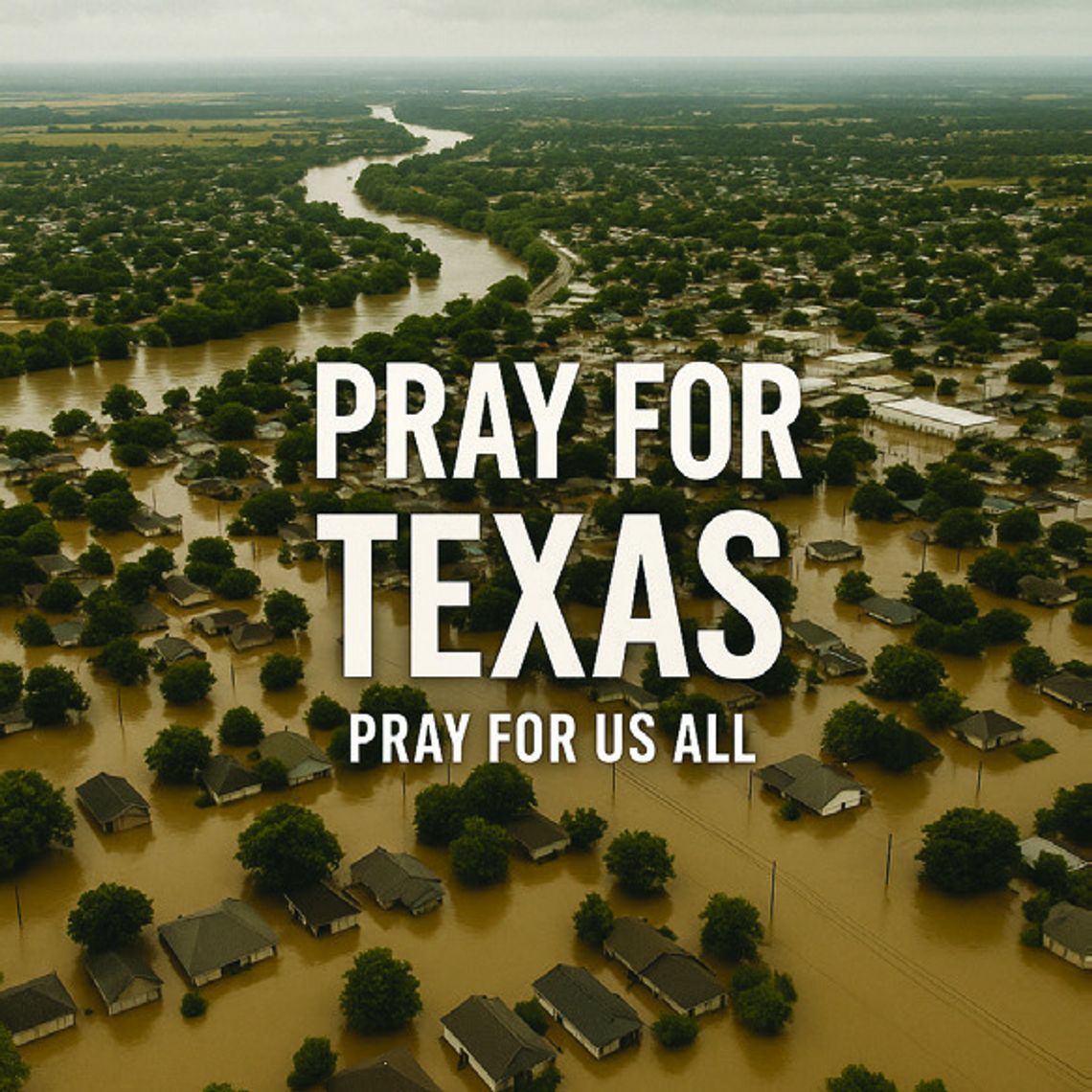AFTER THE FLOOD:
Oklahoma Hearts Turn South
It’s been a week since the rivers in Central Texas rose—so fast and so high, the floodwaters in places reached twenty-five feet. For folks in Western Oklahoma, that’s hard to imagine. Twenty-five feet would climb past the second floor of the old Beckham County Courthouse, the same courthouse that stood watch in The Grapes of Wrath, and it’s a sight nobody here ever wants to see.
But when tragedy struck south of the Red River, it didn’t take long for Oklahomans to turn their attention— and their hearts—toward Texas. By the time most folks around here finished cleaning up after the Fourth of July, rescue teams from Tulsa and Oklahoma City were already rolling south, loaded with boats, boots, and the quiet determination that comes standard-issue on this side of the plains.
What happened in Texas isn’t just a headline; it’s a gut-punch. More than a hundred lives lost. Dozens still missing. Camp Mystic— just the name brings a lump to your throat. The water didn’t just rise; it changed everything in a matter of hours. And it reminded everyone in Western Oklahoma how thin the line is between normal and disaster, between a family cookout and a full-blown crisis.
We joke about our rivalry with Texas, but when the sirens fade and the need is real, there’s no border—just neighbors.
A TRAGEDY WITH A HUMAN FACE
At Camp Mystic, just south of Hunt, the flood hit in the dead of night. Twenty-seven campers and counselors were swept away, the director died trying to save them, and families from across Texas—and Oklahoma—waited for news that never came. In Kerr County and beyond, whole communities woke up to a world changed by the river’s rage.
“It’s a time when we, as a state, need God more than ever,” Texas Governor Greg Abbott said, promising every tool and resource to help survivors. But in disasters like this, help never stops at the state line.
Oklahoma’s own Governor Kevin Stitt said it plain: “That’s the Oklahoma Standard. I’m grateful to our elite first responders for their willingness to step up and help our neighbors once again.” By July 5, Oklahoma Task Force 1 teams from Tulsa and Oklahoma City had boots in the water in Kerr County, helping search for the missing and pull stranded families to safety.
NEIGHBORS IN ACTION The Oklahoma crews didn’t go for headlines. They went because it could just as easily have been Elk City, Sayre, or Mangum on the wrong end of a stalled storm and a rising river. They went because every Okie knows what it’s like to depend on a neighbor—whether it’s a fence mended, a meal shared, or, in this case, a rescue boat at midnight.
Back home, folks watched the footage and thought of their own families, their own memories of the Fourth. The “Oklahoma Standard” isn’t just a slogan—it’s a reflex.
HOW WE CAN HELP
The heartbreak in Texas isn’t over. There are still families searching, homes to rebuild, and scars that won’t heal soon. If you want to do something, here are a few ways to help: - Donate: The Kerr County Flood Relief Fund, local churches, the American Red Cross, and trusted GoFund-Me campaigns are all taking donations.
- Volunteer: If you have time or skills, reach out to local aid groups coordinating efforts across the state line.
- Pray, support, remember: Sometimes the best way to help is to keep these families in your thoughts—and to remember how quickly everything can change.
STANDING TOGETHER We may draw the line at football, barbecue, or who really invented the chicken- fried steak—but in times like these, Oklahomans know exactly where they stand: right alongside our neighbors. Because when the water rises, the border disappears. And that’s something worth holding onto.
For more information on how to support relief efforts, visit www.texashillcountryrelief. org or contact the Community Foundation of the Texas Hill Country at 830-465-4794.



